Once upon a time, oil came in cans.
They stacked nicely but made a mess when you tried to extract the oil, which you did by using a punch/funnel. In addition to making a guaranteed mess, you were left at the end of the job with five or six drippy cans that couldn’t be used to store the old oil or for any other thing. So you tossed them – along with lots of oil-mess – into the trash.
In the ‘80s you could find catalytic converter “test pipes” hanging off the wall at the car parts place. They could be used to test the efficiency of the catalytic converter – permanently. The “test pipe” was designed to fit precisely where the catalytic converter was.
In those days, car parts places also sold steering wheels, to replace the one that came with your car and thereby give it a custom appearance. This was possible because in those days, steering wheels didn’t come with air bags in them – because the government hadn’t yet mandated them.
Cans of Freon were there, too.
You didn’t need to be “certified” to buy them and they cost about $5 a can, too. But Freon got outlawed in the ‘90s – ostensibly because of the Ozone Layer but actually because the patent on the refrigerant was about to expire, which would have cost the patent-holder, the chemical company DuPont, a large sum of money. It made more money by financing its illegalization – multiplying the cost of Freon – and by bringing forth its replacement, R134a.
People who never experienced a Freon AC system have no clue what cold AC means. As in cold enough to frost the vents. Ah well, no more.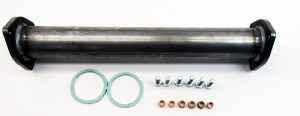
Repair manuals were another thing you could buy for $15 or so at any car parts place. You could use them to service your car. Today, parts places have scan tools, which you can buy to download the code you need to service your car.
Have we lost – or gained?
There is less need for parts today, of course – and those who view cars as appliances will probably regard that as a plus. They don’t want to buy parts. They just want the car to work and – for the most part – they do. Back in the ‘70s and ‘80s – and even into the ‘90s, when cars from the ‘70s and ‘80s were still in abundant use – they often didn’t.
And then you needed parts for them.
But these parts were generally inexpensive and – relative to today – easy to install. They didn’t require a computer to anoint their installation – as many modern cars do, in order for the part to work. And it was empowering to know you could fix the car, as opposed to being dependent on someone else to fix it.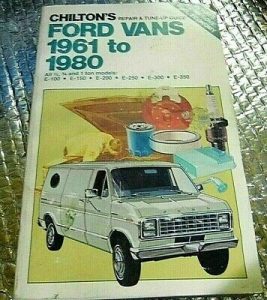
It was also possible to make a part work. If it physically fit, it just might. You could swap intakes, even engines. Today, this is not possible because cars are hard-wired together; the parts are specific to that car and parts from another car will not work even if they fit.
The computer will not permit it.
Oil changes, on the other hand, are far less messy now than they were. Bottles – and jugs – are an indisputable boon. All of the oil goes into the engine rather than partially on the engine. And after you’ve finished pouring the fresh oil in, you can pour the old oil into the bottles/jug and carry them to the recycling place without turning your trunk into the Exxon Valdez.
Catalytic converter test pipes (if you can find them) are still a grand idea – for the cars of the ‘70s, which were crippled by add-on first generation catalytic converters they were never designed to work with. The early cats worked like a cork in a wine bottle; uncorking therefore made good sense – from the standpoint of performance and gas mileage.
It doesn’t make the same sense now because cars have been designed to work with cats since the ‘80s – and removing them can create more problems than it solves, including with the emissions polizei. Plus, the modern car will know you removed the cats and complain about it. Narc you out about it – by flaring the “check engine” light, which will alert the emissions polizei to your malfeasance.
The disappearance of Freon is tragic.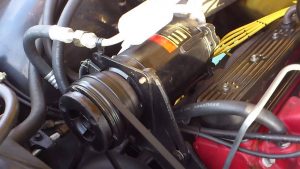
The stuff worked better than any of its government-mandated replacements. This isn’t rose-colored-glasses nostalgic retrospecting, either. Your Libertarian Car Guy owns a car with a Freon AC system – pressurized by a massive GM Harrison compressor that noticeably loads the engine when it cycles on. Some will remember this.
It is capable of refrigerating the interior of my ’76 Trans-Am. Not merely cooling it down to tolerable levels. I demonstrate this to the unbelieving, who come away impressed and believing.
Like the taste of real Coke with sugar – in a bottle – it’s a taste of something no longer made in America.
Or sold at a parts place near you.
. . .
Got a question about cars, Libertarian politics – or anything else? Click on the “ask Eric” link and send ’em in!
If you like what you’ve found here please consider supporting EPautos.
We depend on you to keep the wheels turning!
Our donate button is here.
If you prefer not to use PayPal, our mailing address is:
EPautos
721 Hummingbird Lane SE
Copper Hill, VA 24079
PS: Get an EPautos magnet or sticker or coaster in return for a $20 or more one-time donation or a $10 or more monthly recurring donation. (Please be sure to tell us you want a magnet or sticker or coaster – and also, provide an address, so we know where to mail the thing!)
My latest eBook is also available for your favorite price – free! Click here. If that fails, email me at [email protected] and I will send you a copy directly!


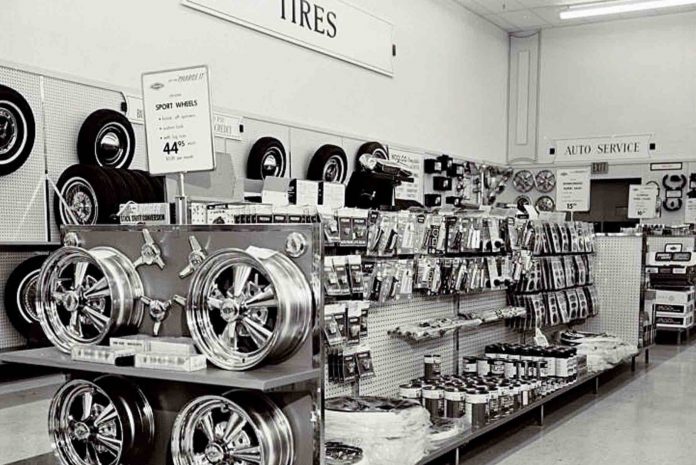


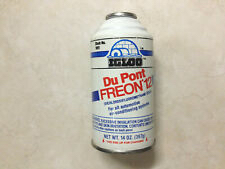








Here’s another piece of parts store archaeological goodness: Machine shops on the premises.
Needed brake drums or rotors turned? Had your engine overheat and burn a valve or two? Maybe you’re burning oil and need your cylinders honed and pistons re-ringed/sleeved? Your local parts store could take care of that, often while you wait.
Or maybe you wanted heads and intakes ported…or even your engine strokes and/or bored? Just drop off your engine in the back.
Some parts stores with machine shops became speed shops known for building high performance motors.
Today, those places are a real dying breed. If you have one near you, you’ve got a real treasure.
The ozone depletion is the first Leftist lie before it morphed into global warming then climate change. Ozone is created and destroyed by the sun. It gets blown around like smoke around the atmosphere. When they discovered the *hole* in Antarctica they had no cause for it at the time, except the one real fact: the roaring 40’s. There is no land mass at 40 degree South latitude and the winds are tremendous year round. (Ask Captain Bligh) This is a vortex barrier the sucks out and prevents ozone from getting it. That is why Dupont got rich again by pointing the evil finger at their own product that was going to get cheap due to the patent running out, to create another product they control. Do you think any environmental lawyer could win a lawsuit against Dupont for creating R-11, R-12 and R-22 and causing the ozone hole? Absolutely not; the lawyer would have to prove something science has not proven.
Back in the early 90’s Costco use to sell R-12 cylinders. I wish I bought a whole pallet back then and stored to this day.
Man the other day the boot switch on my car went funny (of course a switch – not a lever or something). Kept opening when you didnt want and not opening when you did. So thought id take a look .How complicated can it be – an electrical button….
Took the back off from the inside. Couldn’t access it. Then tried to get some of the plastic off above the numberplate and go through there – special screws. After hours of messing around finally got – but its an actually a circuit board with god knows what crap on it, the license plate light, and other crap all in one with a special connector. Getting a replacement – around 200 pounds…. for a switch. And that too salvaged as its a 13+ year old car and the new one cant be found…. anyhow was stubborn so took all the seal off and dried it and put one of those little silica gel packs back there to keep it dry as I suspect some seal is leaking and allowing humidity to get there.
Surprisingly for all this talk about sustainability this crap the big corporates like talking about this is a mighty un-sustainable way to do things!
Hey Nasir,
Americans don’t know what a boot is, let alone a bonnet; don’t ask if we’ve got a rubber on our pencil either.
Cheers,
Jeremy
Hey Jeremy!
Ha! I just heard a story recently, of a Limey who is now living and working here. Early on at his office job, he asked a female co-worker if he could “borrow a rubber” 🙂 You can imagine the horror and hilarity that ensured!
Just hope Nasir remembered to put his “number plate” back on, so he doesn’t get pinched while “motoring”, or he may find himself hoofing it on the “pavement”. 😀 (Well, at least his “petrol” bill would be lower).
Hey Nunz,
Same story with my mom, in class, shortly after moving to the US, she asked a male classmate if he had a rubber she could borrow.
Cheers,
Jeremy
haha – yeh good points guys.
Interesting how different the the same words are in the US vs UK – I guess Ive caught on to more of a British dialect in the 15 years ive been here. But learning more every day…. Like some days back I told my daughters it was cold and to go wear a proper pair of pants or something. Both started laughing…. later I was told that pants here means underwear…..
Hehe, guys, the “rubber” thing never gets old 😀
Jeremy, now ya got me curious; If I may ask, what part of England was your mother from? I don’t think most Americans realize how different parts of England can be as culturally different from one another as NY is from MS. That fact was driven home to me when I became friends with a neighbor back in NY to whom I had sold a car, who happened to be a transplanted old-school “Geordie”. Hehe, what a character! (And though he had been here for over 40 years when I knew him, his accent never faded!).
Nasir, you’ve probably heard the old saying re the US and Britiain…but just in casde you haven’t:
“Two nations separated by a common language”. (-George Bernard Shaw)
In England, Robin is a boy’s name. In the US, Robin is a girl’s name….
Oh, and Jeremy, I assume you are familiar with the old Brit-com “The Good Neighbors” [Known across the Pond as “The Good Life”]- That comedy was actually influential on me as a teen in forming my economic and Libertarian outlook!
Hey Nunz,
Mom was born in Abergavenny, Wales. Dad was born in London. Mom was studying medicine in London when she met my dad.
I haven’t seen that show, I’ll check it out.
Cheers,
Jeremy
[Dispenses with vowels to accommodate Jeremy’s Welsh heritage]
Jrmy ( 😀 )
Oh, do check-out The Good Neighbors- I think you will enjoy it! It’s about a married couple (The Goods) whose husband quits his job to practice a self-sufficient lifestyle in their suburban Surbiton home- much to the chagrin of their snobby neighbor Margot and her easier-going husband, Jeremy. (The self-sufficiency thing is actually based on the story of a real person)
This is NOT the first episode (where they set the premise of the show) but since you already have the idea…this is good ‘un:
https://www.dailymotion.com/video/x5a7xy6
Hey Nunz – not heard that but is a good one. Interesting how different english can be. If you want real different some parts of Scotland – you wont even know its English.
Never watched the show – but seems interesting. Will check it out (spent my life watching mostly American television somehow). Especially as I used to live in Surbiton till last year.
One British show I did get into (and would highly recommend if you havnt) is Yes minister – think its one of the best shows from this country…..
If you park in dodgy locales, you can get your nave plates pinched!
Eric, I don’t dispute the patent issue behind, R-12 being banned. A well designed R-134a system will actually work better though. It is actually a better refrigerant. You hinted at the real reason behind why those old systems cooled so we’ll. They had a very large cooling capacity. That’s why turning the A/C on used to be similar to slamming on the brakes. This was even true of R-134a systems. My R-134a Ranger cooled slightly when I bought it. I couldn’t believe it when I found a large rust hole in one of the lines. The massive compressor was basically just pumping air and it still had a slight cooling affect. The poor cooling performance of today’s vehicles is due to very undersized systems. Tiny compressors, tiny lines. The high pressure line on most of today’s cars looks like a brake line. Compare that to what the lines on the cars you refer to had.
Having said that, R-1234yf is the same theory. The patent ran out for R-134a and Dupont and honeywell wanted an alternative, and it has no advantages. Daimler also did a test and found that the gas that is released if the R-1234yf oil is burned is so caustic, it melted the windshield of the 5 layer S-class windshield in less than a minute. They fought the forced introduction for years and eventually was forced to accept it by the Eurofascists.
Chinese R12 for sale:
https://cyyenergy.en.made-in-china.com/product/NKRmwkEDAChu/China-Refrigerant-Gas-R12-High-Purity-with-Good-Quality.html
Don’t forget this one: Repair manuals, like the ones from Chilton, used to have exploded-view drawings of every major assembly in the car and detailed instructions for taking them apart and putting them back together.
You could see how every single part in the engine, transmission and rearend went together. Same with the distributor, steering column and pedal box.
I kid you not, the Haynes manual for my ’96 Crown Vic – the one I converted to a five-speed – told me that
the automatic transmission was too complicated for a home mechanic to fix, and that I should take it to a garage.
Whiskey. Tango. Foxtrot?
If I had any intention of taking my car to a garage, I wouldn’t have bought the manual in the first place.
Ice, that reminds me of a good story. I was 12, got my first bike, a wasted Honda CT70 for $150. I put it in my moms crawlspace (4ft high), bought a manual, and all winter proceeded to take the engine completely apart, and carefully back together with the great exploded views. Everyone said ‘no way that is going to run again’, haha. The great part was during re-assembly of the trans, I was baffled why it wouldn’t shift through the gears, but was smart enough to not put it completely back together until it would. After hours of apart and back together, I finally found the culprit. In the trans exploded view there was a part with a spring, like a follower, that was shown installed backwards. I was able to confirm this with the old wear marks. Put it together ‘my way’ and it worked.
I called the manual maker (no computers back then), and was cool when they put me on the line with the actual manual creator. I told him my find. He said, ‘can I call you back?”, of course.
He called back a few days later, and said ‘wholly crap kid, you were right’ We are going to fix it right away but have no way of contacting all the old manual purchasers unless they bought it from us directly.
How about that? Cool.
ohhh, the bike ran great, and after it got passed around to approx. 10 kids in the neighborhood as I grew up, I was fortunate to find it again about 20 years later by accident, re-buy it, fix it up and I own it today.
Gosh darn, what an AWESOME story, Chris! -On so many levels! If it were fiction, ya’d say “That could never really never happen in real life!”. WoW! I’ll remember this….
Thanks, couldn’t believe as I was walking through the race pits I saw a green CT70 with a clutch (rare). I walked over and sure enough it had the intake manifold studs, non-stock, that I put in because I stripped the little 10mm ones when I was 12-13. I told the guy, please call me if you ever want to sell it. This was 15-20 years after I last saw it. Then a couple years later, a friend came over the shop and saw a picture of that bike on my wall. “hey chris I have that exact bike in green. WHAT!!!! It was the same bike, and he got it off of the guy I said to call me. Small world.
I persuaded him to sell it to me, fixed it up mechanically and still putt-putt it around. That was really fun working on it again all winter, brought back tons of memories. ohhh, you won’t believe this: because I was young and inexperienced, when trying to get the mag off I didn’t know you needed a special puller and pried with screwdrivers, punched a hole in the backplate, but had no money so I JB-welded it, and guess what, it’s still there and not leaking. some day i’ll get around to making it street legal again as all the DOT stuff is gone. We guessed it had been through 10-15 owners from the time i last saw it as a young 20 something to my late 40’s. Unbelievable.
ohhh, and about 100 miles away from where I grew up. wow.
Hi Chris,
These stories are better than bacon, almost – and better for you! I enjoyed reading about your CT70 and while I haven’t got my old Honda I feel the same about my Trans-Am, which I have had since I was in my young 20s and been lucky enough to never let go of. It has outlasted my marriage, my youth and been my boon companion all these many years. When I get behind the wheel, I am 23 again and it’s impossible to think about Face Diapers or any other ugly thing. The shaker does its left-right dance in time with my right foot as the sun’s rays dance off the hood bird and I feel born again, every time.
Crazy right. I was trying to expand on Ice’s ‘manual’ post because he was right-on about the exploded views, but that’s what brought back that memory for me.
I would much prefer to have kept my ’69 GTO Judge like your Trans AM.
That Judge deserves it’s own story with me for another day.
Thx.
$5 a can for R-12 back in the day? More like $0.89 US in the late 70’s! Of course, that translates to $3.19 in today’s fiat taxed dollaritos.
R-1234yf, ugh, what a load of synthetic monkey crap that refrigerant is. Requires a third heat exchanger usually to boil off all the liquid, which in the grand MoPar Liturgy of the Holy Evaporators, starts pissing out refrigerant after 4-5 years. THAT stuff is really expensive, like $45 US per can right now.
Back in the day, did you ever see questions in Hey Smokey like “Can I Work on my R-12 System?”. No, folks just messed with it and learned (usually). That’s how many got into HVAC/R work, or at least earned an appreciation and understanding of it. Nowadays, you have to first be “trained” and “apprenticed” by Uncle to even look at a mobile A/C system…if you follow their rules. When we wonder where the appreciation of things mechanical (and electrical) went, that’s a big part of the problem. Regulation and bureaucratic tyranny.
Jason F. is right, the EPA is a gang with no morals and no mercy.
Ah! This article speaks to me!
When parts stores were more about parts and tools than they were about seat covers and cleaning products; When the guy behind the counter actually knew something about cars, and the parts that he sold. When you could buy a rebuilt alternator or starter for $30. (Instead of $300)
And the cold A/C! I remember one summer, I had gotten 2nd-degree sunburns on my legs, and was suffering in pain- so for relief, I went riding around for hours in my ’79 Regal with the A/C blasting…and felt just fine! [Didn’t have A/C in the house…never did when I lived in NY- ’cause of most expensive electricity in the country- The Democrats “love the poor” ya know- which is evidenced by the fact that they ensure that they will be forever surrounded by hoards of ’em in the states they control. Now I live in a “poor” southern state, where I can happily afford to run the A/C all through the long summers…)
The Left claims to love the poor, but is constantly trying to rob the poor of life little pleasures – always in the name of some alleged greater good.
They do love the poor- that’s why they do everything they can to make everyone but themselves poor!
GM made the best compressor ever- the GM A6. It had 6 pistons connected to an eccentric plate. a 1970s A6 compressor was rated at 4 TONS of cooling capacity! That is enough to cool a 3500 sq ft house! It used DuPont’s R12 (patented in the 1930s) possibly the best Chlorophlorocarbon refrigerant ever made. It had roughly 1 psI per degree making it a low pressure refrigerant- easy on the parts. GMs compressor was so good it was used on Lincolns and Mercedes. R12 used mineral oil instead of the Pag crap we are stuck with today. Interestingly the rubber hoses used on early GM cars were not barrier hoses do a dose of R12 was a regular top off item- like lube or oil. It was cheap and plentiful. It worked great.
Another sad problem with the DuPont scam (executed via the Montreal Treaty globalist feudal lord scam) was that your residential AC had to be replaced with a R22 unit if if broke. That scam worked so well we are fuk’d with R410A- you guessed it- you have to replace the entire system. Soon “they” will discover that R410a is endangering the red breasted pecker sucker fish and some new Saaafe refrigerant will me mandated. Like insurance. Like face diapers. Like Obummercare.
My former neighbor managed to keep her early 1970’s central air working (somehow it’s never leaked the freon) until she passed last summer. Granted she didn’t run it endlessly like most people, and never abused it.
She would visit her daughter in California and when she would be at the airport call and ask me to turn on the air for her. Her house would be like an oven. I would pick her up from the bus station about a hour later and her house would be nice and cool when I would help her bring her stuff in. No modern system would be able to do that. Haven’t noticed if the new people have replaced it yet, but I imagine its days are numbered.
It’s amazing how much better those old systems worked. You could make the house as cold as a refrigerator if you wanted to do that.
Most residential systems shouldn’t leak ever. The compressors are hermetically sealed and the lines are all metal with compression or braised connections. Auto systems are different with hoses, o-rings, and compressor seals exposed.
I recall seeing pictures of cars from the 1950s equipped with early air conditioning systems: they had copper lines with compression fittings.
And don’t forget about Chrysler Airtemp air conditioners: the first Airtemp unit had a 3/4 ton V4 compressor and used both external and recirculating air.
Eric,
My late mom had a 1969 Mercury Montego, which had A/C. The car was maroon with a black interior-IOW, HOT in summer. The A/C was COLD! It wasn’t like today’s R-134a systems…
My dad had an 89 Oldsmobile and the ac stopped working. It was freon so they wouldn’t fill it. So they conned my dad to put the new system in. You are right about them not working, this new and improved system didnt only never work it cost my dad $1000. We all deserve a refund and get our freon back!
Eric, probably the best replacement for the old Freon is stuff like Envirosafe and Duracool, hydrocarbon refrigerants (a mix of propane and isobutane). These are even more efficient than the good old Freon and work fine with the old school mineral refrigerant oil, and unlike R134a they don’t form acids in your air conditioning system. Basically a drop-in for your old car air conditioner.
Envirosafe used to be marketed as an R12a replacement but Uncle put a stop to that. Under EPA gang rules it is illegal to retrofit an R12a system with hydrocarbons but they have not made the same rules for R134a, so these days Envirosafe is marketed as an R134a replacement. (Nudge, nudge, wink, wink, say no more.) Duracool is based in Canada and still markets their product for both types of AC systems
http://www.duracool.com/ecom/shoppingcart.html
https://www.es-refrigerants.com/products/w/id/744/t/enviro-safe-industrial-r134a-replacement-cans-cases/related/true/details.asp
Yes, these refrigerants are flammable, but so is the combination of the newer refrigerants and oil, especially the newest crap (1234yf) the PTB have unleashed in order to “save the planet”. In parts of the world where they are more common, hydrocarbon refrigerants have an excellent safety record.
I personally don’t give a damn what EPA gang rules say, they can kiss my loathesome spotted behind. What I do in the privacy of my own garage or driveway is my own business and the likelihood of them ever knowing is somewhere between zip and zero.